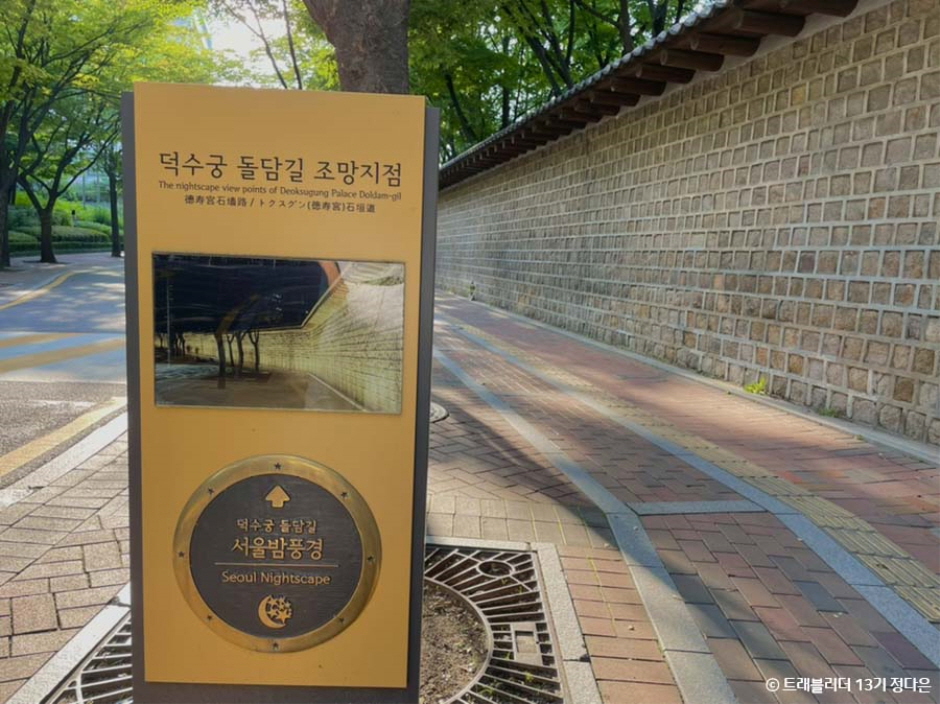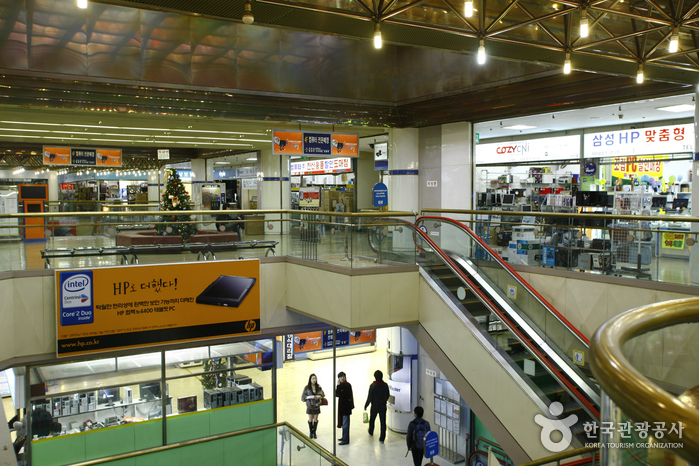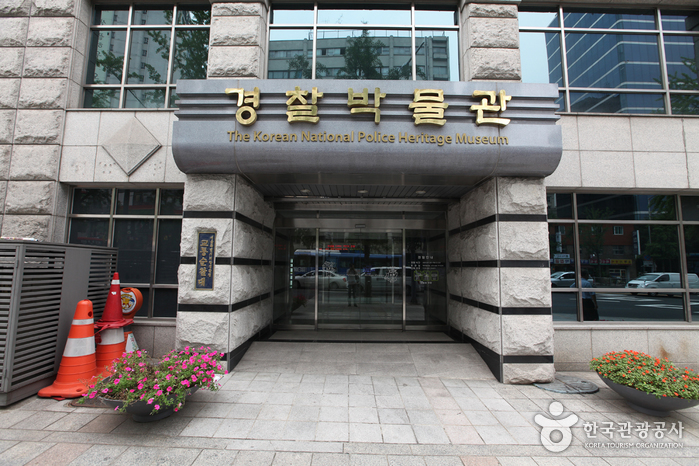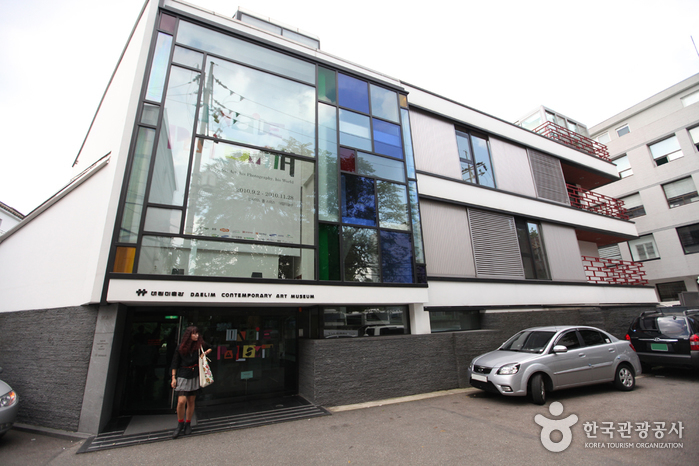Choi Com - Yongsan ETLand Branch [Tax Refund Shop] (초이컴 용산전자랜드)
14.7Km 2024-04-18
Store #A-335, 3F, ET LAND (Main Bldg.), 74, Cheongpa-ro, Yongsan-gu, Seoul
-
Dongshin Electronics - Yongsan ETLand Branch [Tax Refund Shop] (동신전자 용산전자랜드)
14.7Km 2024-04-18
Store #B-11, #B-18, ET LAND Main Bldg. Plaza, 74, Cheongpa-ro, Yongsan-gu, Seoul
-
TNT Info - Yongsan ETLand Branch [Tax Refund Shop] (티앤티정보 용산전자랜드)
14.7Km 2024-04-17
ET LAND (Main Bldg )3층A- 304.319, 74, Cheongpa-ro, Yongsan-gu, Seoul
-
Jeongdong-gil Road (정동길)
14.7Km 2024-06-19
2-1 Jeongdong-gil, Jung-gu, Seoul
Jeongdong-gil Road is one of Seoul's most famous walking paths, stretching from the intersection in front of Jeongdong Church to Saemunan-gil Road. The street holds importance in Korea's modern history, with the surroundings serving as a living museum of this. During the Joseon dynasty, the area developed into a residental space for distant members of the royal family, with a palace and royal tombs in the area. In 1999, the pedestrian walking area was expanded by turning the two-way road into a one-way road. Since then, the road has earned many awards and honors.
Yongsan ETLand (용산전자랜드)
14.7Km 2021-06-09
74, Cheongpa-ro, Yongsan-gu, Seoul
+82-2-707-4700
Yongsan ETLand is an enormous wholesale electronics market located near the Yongsan Train Station, where all needs relating to computers, imported audio systems, game utilities and more are aptly answered. This mall first opened in 1988 as a part of the city's redevelopment project, and became the leading electronics distributer in Korea. The mall is considered the go-to place for anyone interested in purchasing electronics, whether it'd be computers, cameras, digital gadgets, electronic parts, or other IT products.
Korean National Police Heritage Museum (경찰박물관)
14.7Km 2021-12-21
41, Saemunan-ro, Jongno-gu, Seoul
+82-2-3150-3681
The police museum opened on October 14, 2005 to give a better understanding of the job of the police and to offer a formal education to children who wish to become police officers in the future. The history hall of the museum is designed for visitors to learn about the history of Korean police at a glance, exhibiting information on the police force from the Joseon dynasty up until current times.
Visitors to the museum can pretend to be police officers by touching actual equipment and learning about an officer's daily tasks. Visitors can also get in patrol cars, wear a police uniform, experience shooting a gun through a simulation, and learn self-defense martial arts and arrest techniques. Visitors can also go to the museum jail.
Olive Young - Jeongdong Branch [Tax Refund Shop] (올리브영 정동)
14.7Km 2024-04-22
26, Saemunan-ro, Jung-gu, Seoul
-
Olens - Chung-Ang Univ. Branch [Tax Refund Shop] (오렌즈 중앙대)
14.7Km 2024-04-16
1F, 87-1, Heukseok-ro, Dongjak-gu, Seoul
-
Kangbuk Samsung Hospital (강북삼성병원)
14.8Km 2025-07-07
29 Saemunan-ro, Jongno-gu, Seoul
Established in 1968, Kangbuk Samsung Hospital has over 50 years of history and is taking a new leap forward with a vision for its centennial year.
Through partnerships with renowned institutions, such as Johns Hopkins Hospital in the United States and the BBDC in Canada, the hospital delivers advanced medical services while leading the public health arena. It is also committed to systematic research and the development of ICT-integrated digital healthcare, which will be the foundation for future medicine. With an excellent infrastructure that includes clinics and specialized centers (e.g., the Diabetes Center, Breast and Thyroid Cancer Center, Digestive Cancer Center, Musculoskeletal Disease Center, and Prostate Center), Kangbuk Samsung Hospital provides top-quality medical services focused on providing patients with satisfactory treatments.
Daelim Museum (대림미술관)
14.8Km 2022-07-29
21, Jahamun-ro 4-gil, Jongno-gu, Seoul
+82-2-720-0667
The Daelim Museum, built by the Daelim Group, was first established in Daejeon in 1996 and later moved to Jongno, Seoul in 2002. The art gallery studies, analyzes, and presents modern art through the lens of photography and holds exhibitions centered around photo media.
The museum is located in the residential area of Tongui-dong, near the time-honored Gyeongbokgung Palace. The museum, which was designed by French architect, Vincent Cornu, and built by the Daelim Corporation, opened its door to the public in late May 2002.
On the first floor, there is a garden, parking lot, reception desk, storage area, and conference room. On the second and third floor are offices and exhibition hall approximately 595 m² in size, consisting of small and large rooms, a long gallery, and a special high-ceilinged exhibition space. On the fourth floor, there is a seminar room that can seat up to 120 guests and a balcony with a beautiful view. From the balcony of the seminar room, Visitors can also enjoy a wide open view of Inwangsan Mountain and Bukhansan Mountain. The stained glass panels (designed to reflect the beauty of traditional Korean wrapping cloth) and the scenic lounges on the 2nd and 3rd floors of the building add to the overall charm.
Above all else, the museum was designed with consideration of the photos, which are very sensitive to humidity, light, and temperature.
![Choi Com - Yongsan ETLand Branch [Tax Refund Shop] (초이컴 용산전자랜드)](http://tong.visitkorea.or.kr/cms/resource/00/2878500_image2_1.jpg)
![Dongshin Electronics - Yongsan ETLand Branch [Tax Refund Shop] (동신전자 용산전자랜드)](http://tong.visitkorea.or.kr/cms/resource/03/2878503_image2_1.jpg)
![TNT Info - Yongsan ETLand Branch [Tax Refund Shop] (티앤티정보 용산전자랜드)](http://tong.visitkorea.or.kr/cms/resource/86/2878486_image2_1.jpg)



![Olive Young - Jeongdong Branch [Tax Refund Shop] (올리브영 정동)](http://tong.visitkorea.or.kr/cms/resource/11/2888011_image2_1.jpg)
![Olens - Chung-Ang Univ. Branch [Tax Refund Shop] (오렌즈 중앙대)](http://tong.visitkorea.or.kr/cms/resource/16/2880016_image2_1.jpg)


 English
English
 한국어
한국어 日本語
日本語 中文(简体)
中文(简体) Deutsch
Deutsch Français
Français Español
Español Русский
Русский